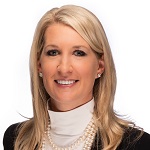2. Go back to the basics
Think about all of the items that you have been documenting for years, the things to help create a “well-oiled machine”. Even if you don’t use those guides or processes each day under “normalized” circumstances, dust the documentation off. Bring it back to the forefront of your team conversations and daily meetings. You will be surprised by how much comfort your documented systems will bring to your entire team. During chaotic times, it is extremely helpful to remind every member of the team that remaining calm and focusing on tried and true methods can make all of the difference between just surviving the storm, or thriving during it.
3. Teach time blocking practices
Distractions will abound. Those dirty dishes in the sink, the laundry piling up, the sunny day outside, etc. They are all there. The key to balancing your work and personal time is to ensure that you have scheduled short breaks throughout your day in order to mentally clear your head. Consider time blocking on your remote work days so that you have periods of true focus and 100% engagement on work, but also have small breaks that allow you to feel like you are not holed up in your home office, basement, garage, etc. Those small blocks of time for your own sanity will really help the days run more smoothly.
4. Create virtual boundaries
Explain to your family, partner, or spouse that even though you are physically at home, you still must be treated like you are at work. You have meetings, calls, and projects that need completion, as if it is any ordinary day. Help them to understand that you will have a signal or a process to let them know when you are on a break or finished with work for the day. Otherwise, their constant interruptions can be challenging for you to retain your focus.
5. Embrace Technology
Think of all of the ways you use technology in your personal life to stay in contact with family and friends. It is second nature to most of us to pick up a mobile device and video chat with a loved one, and we don’t think twice about texting a friend to discuss the weekend’s plans.
However, when it comes to staying in contact with clients, we typically take a more traditional approach of making a phone call or sending an email. Consider branching out and using your firm-approved communication tools. The learning curve on some of these items can be steep, so first think about who on your team enjoys or is comfortable with new technology. Engage that team member and put him or her in charge of your team’s tech advancement processes. You may laugh, but think back to preschool and the “circle time” that we all enjoyed so much. What if you created “circle time” type of videos (if your firm allows this, of course) to deliver personalized messages to your clients in a very timely fashion. Sometimes reflecting on what worked in our formative years can add much value during changing times. You may find that, in the end, clients truly enjoy being engaged slightly differently, and leveraging these solutions allows you to have more contact with more clients in less time.
Keeping connected with your team is more important than ever when forced to be physically distanced. Staying in touch regularly will help you to understand each other’s schedules and be on the same page with resources and materials, while also keeping a good rapport. Show your team that being in different places doesn’t have to mean being on different pages.





